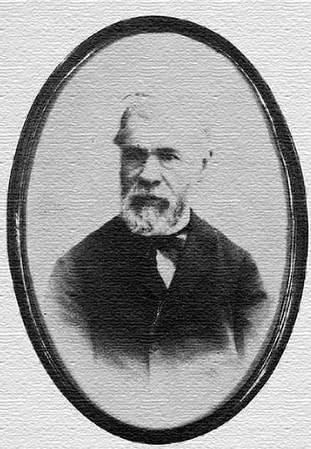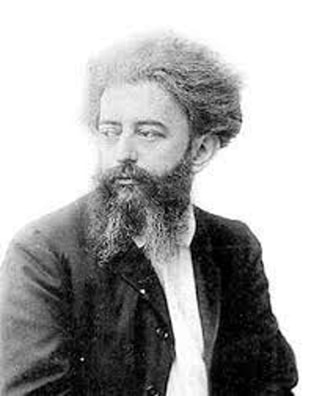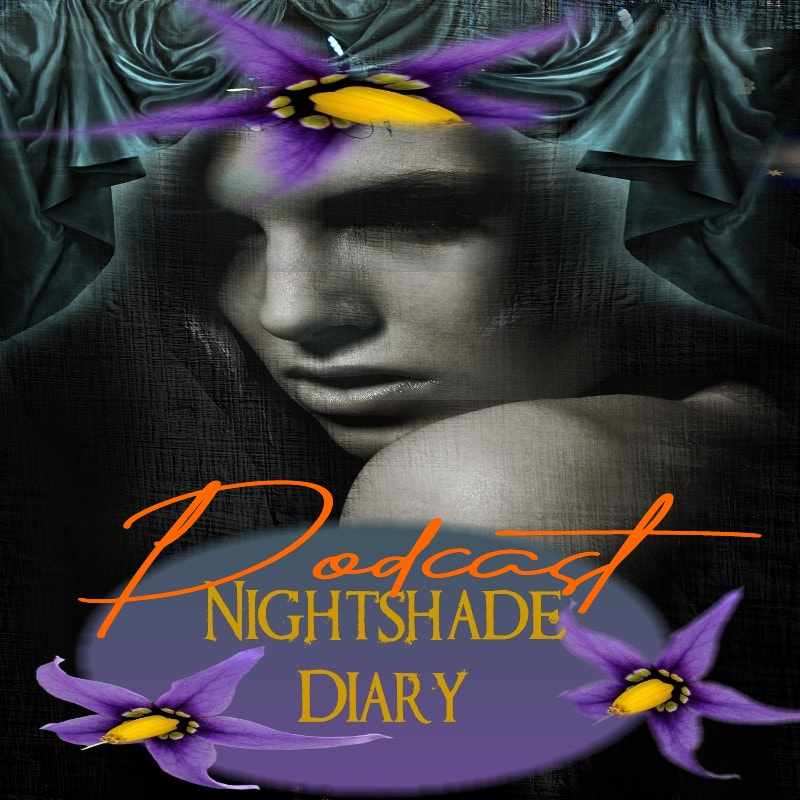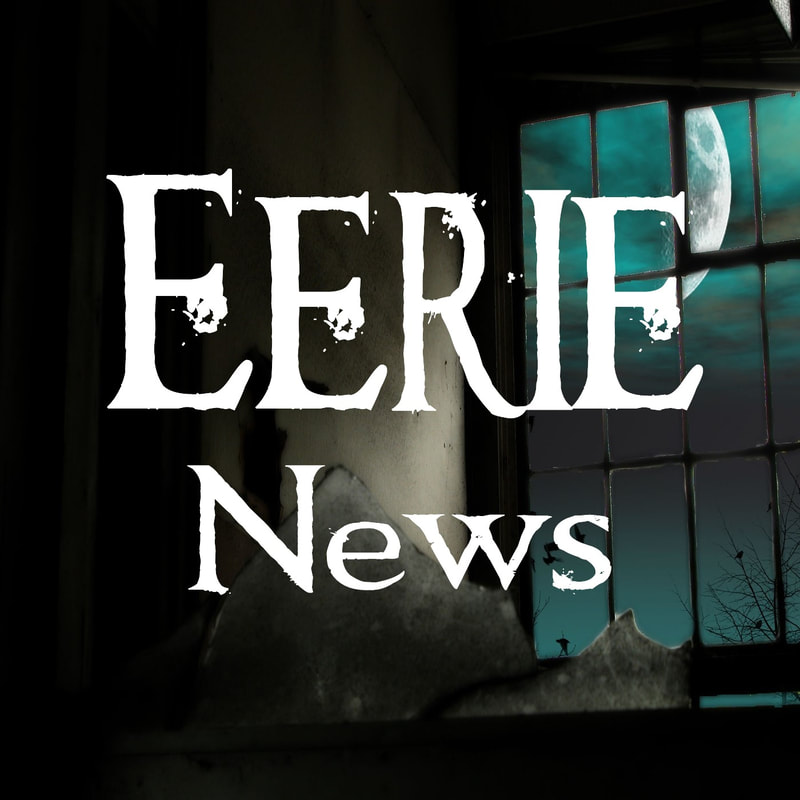 By M.P. Pellicer | Stranger Than Fiction Stories In early 1893, Joseph-Antoine Boullan died. A defrocked priest, he was the head of a schismatic branch called the Church of the Carmel. He was also known as the Black Canon of Lyons.  Joseph-Antoine Boullan (1824-1893), also known as The Black Canon of Lyons Joseph-Antoine Boullan (1824-1893), also known as The Black Canon of Lyons Born in 1824, Boulan was ordained in 1848. He became a follower of Eugene Vintras, once a foreman in a cardboard box factory who claimed to be the reincarnation of Elijah. Vintras founded two sects, the Work of Mercy and the Eliate Church of Carmel. He was dogged by rumors of demonic rituals and sexual excesses. In an 1846 pamphlet he was accused of homosexuality, conducting black masses in the nude and masturbating on the altar. He was condemned by the Pope, which would have made him a very unsuitable person for a Catholic priest to fraternize with. Despite the gossip, only an accusation of fraud put Vintras in prison for five years. In 1852, he fled to London since his sect was openly persecuted. In 1859, Boulan joined Vintras' sect. The following year Boulan was suspended from office and accused of sacrificing an infant; his own bastard child during mass. He faced trial not only for this crime but for fraud. He served 3 years in prison. When Vintras died in 1875, Boulan claimed successorship to the Carmelites. He created a schism, and in Vintras fashion, he claimed to be the reincarnation of John the Baptist. Throughout his life abbe Boullan was accused of being a decadent satanist who taught sexual magic and engaged in "fornication and black rites", with his housekeeper and priestess Julie Thibaut, who was a former nun. Once defrocked he was known to administer "la messe noire, with all its obscene rites" in a private chapel, beyond the heights of Mont Parnasse. However he also freed persons from curses at a hefty fee. A lady came to him who suffered from a double spell. Trees and plants withered upon her estate. The Black Canon by his incantation instantly cured her anguish, and since she didn't pay his entire fee he didn't lift the curse upon her land. Boullan's teachings were based on sex-magic in two different forms: 1. sexual intercourse with the higher spirit world and chosen human individuals through unions of wisdom or 2. sexual intercourse with the lower and elemental spirit world and ordinary human individuals through unions of charity. He claimed to cure diseases and described himself as the forerunner of the Holy Ghost, and he had ardent followers who called his punishments as "sufferings, accepted for the greater glory of God." However there were those who believed that Abbe Boullan thought he could cast spells, and was capable of supernatural strength. Three of his acquaintances became almost blind according to the threat made by the abbe. Boullan had sent them placards covered with red inscriptions. They had a peculiar odor and dust fell from the letters that was so fine it mingled with the atmosphere. Once the placards were burned the sight of the three victims was restored. The abbe predicted to another person that he would have visions, which resulted in terrible nightmares and headaches. His servant would go on to confess that he was paid by Abbe Boullan to put opium in the man's coffee. Boullan would write to all his disciples in red ink, instructing them to hang them on the wall, or wear them against their heart. Oswald Wirth, tarot illustrator and Stanislas de Guaita started as followers of Boullan, however they turned against him, and released stories about the "adultery, incest and bestiality" they witnessed when attending his rituals. Boullan was described as a "pontiff of infamy, a base idol of the mystical Sodom, a magician of the worst type, a wretched criminal, an evil sorcerer, and the founder of an infamous sect." M. Georges Duval once spent the evening with the abbe, and in jest asked him how he could make a fortune. The response from Boullan was quite serious. He said: Take a young black hen, and when you catch her she must make no noise; go at 11 o'clock in the evening, when she is asleep. Take her by the neck and hold her only tightly enough to keep her quiet. Go on some broad highway where two roads cross; there at midnight make a circle with a cypress wand, place yourself in the center and cut the hen in two parts as you pronounce these words three times: 'Eroim, essaim, frugativi et appeliavi.' Then turn towards the east, kneel and say a prayer from page 85. This done, you will make the appeal. Then the Spirit of Evil will appear, clothed in an embroidered scarlet coat, a yellow vest and water-green culotte. The head, resembling the head of a dog, with asses' ears, will be surmounted by two horns, and its legs and feet will be like those of a cow. It will ask your wishes, when you will say what you think best, and you will be the richest among men.  Henri Antoine Jules-Bois (1868-1943) Henri Antoine Jules-Bois (1868-1943) M. Duval obeyed his instructions which resulted only in the loss of his pocketbook. Henri Jules-Bois wrote Le Satanisme et la Magie (Satanism and Magic). He was a noted friend of McGregor Mathers, the founder of the Hermetic Order of the Golden Dawn. Upon the death of Abbe Boullan, M. Jules-Bois an apostle of literary mysticism accused Josephin Peladan and his follower, Marquis Stanislaus de Guaita of having caused the abbe's death by envoutement, the French word for enchantment. A mystic explained envoutement thus: You hate some person so that you wish his death, but do not care to risk you own life. You make, or have made a waxen effigy of your enemy. Then you place on or about this effigy a handkerchief or something else taken from the object of your hatred. From that time on the waxen image has the sensibilities and the vitality of your enemy. Then thrust needles in the effigy, strike it on the head, break it in pieces, at the same time it will cause your enemy to die in a horrible torture. And as the law does not believe in the 'black arts' you, a real assassin, are free from all punishment.  Marquis Stanislas de Guaita (1861-1897) Marquis Stanislas de Guaita (1861-1897) M. Jules-Bois said, "It is incontestable that Peladan and Guaita practiced the 'black arts' daily and for two years the Abbe Boullan struggled with the evil spirits sent by his enemies from Paris. It is not at all impossible that he died from the supreme envoutement." Jules-Bois, challenged de Guaita to a pistol duel. De Guaita agreed and took part in the duel, but as both men missed, no one was hurt. Charles-Marie-Georges Huysmans published his work as Joris-Karl Huysmans. He was the author of La Bas (Down There), and he said that for a year Peladan had sent him each night blows on the head and face when he was ready to go to sleep. He tried to believe it was his imagination, however he noticed his cat received shocks at the same time. He was convinced the blows were the result of magic. In the occult world it was said, that Chantine Doere a character in La Bas was based on Abbe Rocca who published a pamphlet hostile to the Pope. He was thought to be honest in his convictions, in which he tried to reconcile the church with modern ideas and to associate Christ with Buddha. Huysmanus peopled his work with real-life characters that were Catholic, but had turned against the church. A.E. Waite, criticized the work, he said, "Under the thinnest disguise of fiction, he gives in his romance of Là-bas, an incredible and untranslatable picture of sorcery, sacrilege, black magic, and nameless abominations, secretly practicing in Paris." For believers in the "black arts" if the air was pinched at a distance from a person who has been enchanted, he screams. If instead a wax doll or a glass of water is charged with the "sensibility of the subject" whenever the glass is rubbed the subject has the same sensation, or if the doll's hair is pulled the person suffers as if their own hair was pulled. The person would suffer agony if the doll is brutalized. If the doll is crushed the subject dies. Dr. Hart of the British Medical Journal claimed that Peladan was incapable of sending blows every night to M. Huysmanus. He switched out dolls with one which was supposedly hexed, and the subject felt every sensation as if it was the charged doll, when it was not.  Joséphin Péladan (1858-1918) Joséphin Péladan (1858-1918) Prior to his death Abbe Boullan had quarreled bitterly with Stanislas de Guaita. He suspected that de Guaita used a spell known as the "flying spirit." Boulan consulted a clairvoyant who told him the weapon Guaita would use was poison made of farina, meat, sacramental bread, mercury, animal extracts, human blood acetate of morphine and the juice of an asp. The poison would be conveyed to Boullan through the spirit of some dead person who Guaita would summon from the underworld for that mission. Boullan locked himself in his room for several months donning his sacerdotal robes, setting up an altar and appealing to all invisible ones whose aid might prove beneficial. It lasted for months, but Boullan thought he triumphed when he died of heart disease, and not Guaitas' poison. The story goes that even though the abbe had escaped the flying spirit, it would have to finish its mission. Since Boullan was beyond its reach, it returned to Stanislas de Guaita and caused the death of its master, which occurred in 1897. It came in the form of a drug overdose, since he was a morphine addict. De Guaita, said to always dress in red, and was influenced by the writings of l'Abbé Alphonse-Louis Constant, alias Eliphas Lévi, a prominent French occultist, who abandoned the priesthood one week before his ordination. He was the originator of the well-known representation of the Baphomet: a monster with a goat head and a woman's body. He died in 1875, when he was 65 years old. He was buried in the cemetery at Ivry, Germany but in 1881, he was placed in a common grave, the location of which is not known. In 1888, de Guaita founded the Ordre Kabbalistique de la Rose-Croix, or the Kabbalistic Order of the Rose-Cross. Rosicrucianism is an esoteric movement which first began with the publication of the three Rosicrucian Manifestos in the early 17th century.  Joris-Karl Huysmans (1848-1907) Joris-Karl Huysmans (1848-1907) Huysmans was thought to be influenced by Zola, Flaubert and the de Goncourt brothers. He wrote A Rebours (Backwards) about a decadent aristocrat. It was followed by La Bas. It's main subject was satanism. Some of the satanic characters were modeled on persons alive in France when he wrote it, such as Abbe Van Haecke and one-time Abbe Boullan, Henriette Maillat and Berthe Courrier, both who were mistresses to most of the writers of Paris. The novel was translated and published 30 years later in the United States. The plates were melted down since it was considered vice in New York. It wasn't republicized until 1958 under the English title Down There. The main figure of the story was Durtal, thinly disguised as Huysmans, who falls under the influence of three demons. He is writing the history of Gilles de Rais, the 15th century marshal of France who fought alongside Joan of Arc. He was a sadist who murdered more than 700 children. He meets three more characters that prove to him that satanism was still very much alive as it was when de Rais existed. Huysman died in 1907, as a devout Catholic after repenting all his sins. He never married or had children. He had a long-term, on-and-off relationship with a seamstress.  The Invocation of the Devil, from Stanislas de Guaita’s The Temple of Satan. The Invocation of the Devil, from Stanislas de Guaita’s The Temple of Satan. A few months after the death of Abbe Boullan in 1893, testimony was given as to how to recognize one who is possessed. There are four principal signs: 1. No known remedy relieves the afflicted 2. The person speaks of incidents and facts beyond their natural reach and which nobody has revealed to them. 3. The person foretells events and speaks several languages unknown to them before their affliction. 4. In the presence of a priest and at sacred ceremonies the person trembles, suffers pain, writhes and blasphemes. At the end of the 19th century, exorcisms usually took place in church in the presence of faithful assembled at prayer particularly at the feasts of the Nativity, of the Resurrection, of the Ascension, of Pentecost, of the Virgin Mary and of the Apostles. The possessed individual attended morning mass. A stole was passed around their neck to tie the devils that had become the masters of their body. Then the sign of the cross was made upon the person, and they were sprinkled with holy water. The Flagellum Daemonum contained the most complete formula of exorcism consisting of well known prayers mingled with the most ancient and strangest appellation of God, such as On Adonai Tetragrammaton and others which come in art from Chaldea, from Phoenicia and from Greece. The words were supposed to possess in themselves a certain power of evocation of celestial virtues which terrify the infernal legions. Certain words of Christ, according to St. Matthew, are used to drive out evil spirits. At the end of the 19th century, exorcisms were performed in in the monastery in Soligny-la-Trappe, Orne, France. It is the house of origin of the Trappists. The monks did not admit to it, but they would not turn anyone away either if they came for an exorcism. It was said the one who broke the spells was an old monk. He would cast devils into animals. Pigs were the favorite. The old "spell smasher" would whip the swine with beads and sprinkle them with holy water, then they would recover and became happy once again since the devils had been expelled. M. Gilbert Augustin Thierry who authored Une Ame en Peine (A Soul in Pain), described the cure of Petites-Dalles (Small Slabs) in which a special mass was said. It was known as a "red mass" or "mass of the martyrs". Red flowers were placed upon the altar and the priest wore a red stole. The church was draped in purple. A Red Mass is celebrated annually in the Roman Catholic Church for all members of the legal profession, regardless of religious affiliation. The first recorded Red Mass was celebrated in the Cathedral of Paris in 1245. In was celebrated in honor of Saint Ives, the Patron Saint of Lawyers.
0 Comments
Your comment will be posted after it is approved.
Leave a Reply. |
Stranger Than Fiction StoriesM.P. PellicerAuthor, Narrator and Producer Archives
July 2024
Categories
All
|
Stories of the Supernatural
- Stories of the Supernatural
- Miami Ghost Chronicles
- M.P. Pellicer | Author
- Stranger Than Fiction Stories
- Eerie News
- Supernatural Storytime
-
Astrology Today
- Tarot
- Horoscope
- Zodiac
-
Haunted Places
- Animal Hauntings
- Belleview Biltmore Hotel
- Bobby Mackey's Honky Tonk
- Brookdale Lodge
- Chacachacare Island
- Coral Castle
- Drayton Hall Plantation
- Jonathan Dickinson State Park
- Kreischer Mansion
- Miami Biltmore Hotel
- Miami Forgotten Properties
- Myrtles Plantation
- Pinewood Cemetery
- Rolling Hills Asylum
- St. Ann's Retreat
- Stranahan Cromartie House
- The Devil Tree
- Trans-Allegheny Lunatic Asylum
- West Virginia Penitentiary
- Paranormal Podcasts
"When misguided public opinion honors what is despicable and despises what is honorable, punishes virtue and rewards vice, encourages what is harmful and discourages what is useful, applauds falsehood and smothers truth under indifference or insult, a nation turns its back on progress and can be restored only by the terrible lessons of catastrophe."
- Frederic Bastiat
- Frederic Bastiat

Copyright © 2009-2024 Eleventh Hour LLC. All Rights Reserved ®
DISCLAIMER
DISCLAIMER
 RSS Feed
RSS Feed
















